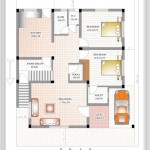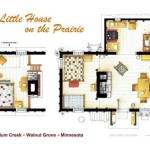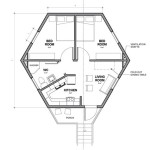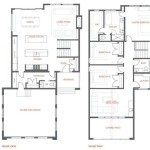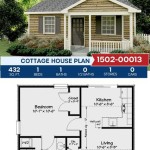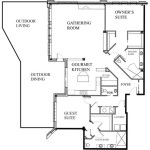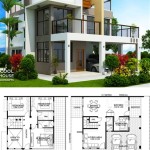Simple Kerala Traditional House Plans With Photos
Kerala's architectural heritage is deeply rooted in its climate, culture, and available resources. Traditional Kerala houses, often referred to as "Nalukettu," "Ettukettu," or "Pathinarukettu" depending on their structure, are renowned for their simplicity, functionality, and aesthetic appeal. These structures prioritize natural ventilation, optimal lighting, and the utilization of locally sourced materials. This article explores the key characteristics of simple Kerala traditional house plans, supplemented with photographs to illustrate different aspects of their design and construction.
The core of a traditional Kerala house plan revolves around a central courtyard called the "Nadumuttom." This open space allows for ample sunlight and ventilation, contributing significantly to the overall climate control within the house. The layout typically includes rooms arranged around this central courtyard, often interconnected by corridors or verandahs. The use of sloping roofs, covered in terracotta tiles, is a defining feature, designed to effectively manage the heavy monsoon rains. The orientation of the house is also carefully considered, usually aligned with cardinal directions to maximize natural light and minimize heat gain.
The construction of traditional Kerala houses heavily relies on readily available materials such as wood, laterite stones, and clay tiles. Teak wood is a preferred choice for structural elements like pillars, beams, and doors due to its durability and resistance to decay. Laterite stones, abundant in Kerala, are used for building the foundation and walls. The use of these local materials not only reduces construction costs but also promotes sustainability by minimizing transportation needs and environmental impact. The walls are frequently plastered with a mixture of lime and sand, providing a smooth and durable finish.
Key Aspects of Traditional Kerala House Plans
Several key elements contribute to the distinctive character and functionality of traditional Kerala houses. Understanding these aspects is crucial for appreciating the simplicity and effectiveness of these architectural designs.
Firstly, the emphasis on natural ventilation and lighting is paramount. The central courtyard, strategically placed windows, and latticework allow for the circulation of air, keeping the interiors cool and comfortable even during the hot summer months. The large overhanging eaves of the sloping roofs provide shade, reducing direct sunlight exposure and further contributing to temperature regulation.
Secondly, the integration of natural elements is evident in the design. The use of wood and stone, along with the incorporation of plants and greenery within the courtyard and surrounding landscape, creates a harmonious connection between the house and its environment. The design often includes features like "Padippura" (gateway house) and "Kulappura" (bathing pond), which further enhance the integration with nature.
Thirdly, the functional layout ensures privacy and facilitates daily activities. The rooms are typically arranged to maximize privacy, with the kitchen and dining area often located near the "Nadumuttom" for easy access. The bedrooms are usually situated away from the main entrance to provide a sense of seclusion. Verandahs and corridors serve as transitional spaces, connecting different parts of the house and providing shelter from the elements.
Let's delve deeper into specific features found in these house plans:
The Nadumuttom (Central Courtyard): The "Nadumuttom" is the heart of the house, serving as a multifunctional space for relaxation, social gatherings, and religious ceremonies. It is often adorned with plants and sometimes houses a small well, providing a source of water. The courtyard also contributes to the overall aesthetics of the house, creating a visually appealing focal point.
The Verandah (Sit-out): Verandahs are integral to traditional Kerala houses, providing a shaded space to relax and enjoy the outdoors. They serve as a buffer zone between the interiors and the external environment, helping to regulate temperature and reduce dust and noise. The verandah is often furnished with traditional wooden benches and chairs, creating a comfortable and inviting space.
The Sloping Roofs: The sloping roofs, covered with terracotta tiles, are a defining feature of Kerala architecture. The steep slope allows for efficient drainage of rainwater, preventing waterlogging and damage to the structure. The terracotta tiles provide insulation, keeping the interiors cool during the summer and warm during the winter. The overhangs of the roof protect the walls from direct sunlight and rain.
The Use of Wood: Wood plays a significant role in the construction of traditional Kerala houses. Teak wood is highly prized for its strength, durability, and resistance to decay. It is used for structural elements such as pillars, beams, and rafters, as well as for doors, windows, and furniture. Other types of wood, such as rosewood and jackfruit wood, are also used for decorative elements and joinery.
The Laterite Stone Walls: Laterite stones, abundant in Kerala, are used for building the foundation and walls of the house. These stones are porous, allowing for good ventilation and helping to regulate humidity levels. The walls are typically plastered with a mixture of lime and sand, providing a smooth and durable finish. The use of laterite stone gives the house a distinctive reddish-brown hue, blending harmoniously with the surrounding landscape.
The Floor Plan Considerations: Traditional Kerala house plans prioritize functionality and privacy. The rooms are typically arranged around the central courtyard, with the kitchen and dining area located near the "Nadumuttom" for easy access. The bedrooms are usually situated away from the main entrance to provide a sense of seclusion. The layout often includes a separate storage room and a pooja room (prayer room), reflecting the cultural and religious beliefs of the occupants.
The following photographs illustrate some of the key features described above:
(Note: Due to the limitations of this text-based format, I cannot directly embed photos. I will describe what photos would ideally be included here.)
Photo 1: An exterior shot of a traditional Kerala "Nalukettu" house showcasing the sloping roof, terracotta tiles, and laterite stone walls. The Padippura (gateway house) is also visible.
Photo 2: A view of the "Nadumuttom" (central courtyard) with plants, a well, and sunlight streaming in.
Photo 3: A close-up of the wooden pillars and beams, highlighting the intricate carvings and the use of teak wood.
Photo 4: An interior shot of a bedroom with traditional wooden furniture and latticework windows.
Photo 5: A view of the verandah with wooden benches and a glimpse of the surrounding greenery.
Modern Interpretations of Traditional Kerala House Plans
While traditional Kerala houses hold immense cultural and architectural value, modern interpretations are increasingly popular. These designs incorporate modern amenities and materials while retaining the core principles of traditional architecture. This allows for a blend of comfort and functionality with the aesthetic appeal of Kerala's architectural heritage.
Modern Kerala house plans often incorporate features like larger windows, open-plan living spaces, and modern bathrooms. However, they still prioritize natural ventilation, optimal lighting, and the use of sustainable materials. The sloping roofs and terracotta tiles are often retained, albeit with modern variations in design and construction techniques. The "Nadumuttom" may be adapted as an enclosed garden or a water feature, adding a touch of greenery to the interiors.
Furthermore, modern designs may incorporate energy-efficient features such as solar panels, rainwater harvesting systems, and insulated walls. This ensures that the house is not only aesthetically pleasing but also environmentally friendly and sustainable. The use of local artisans and traditional craftsmanship is also encouraged, preserving the cultural heritage of Kerala while embracing modern technology.
Benefits of Traditional Kerala House Plans
Choosing a traditional Kerala house plan, whether in its original form or a modern interpretation, offers several advantages:
First, the design promotes a comfortable and healthy living environment. The emphasis on natural ventilation and lighting creates a bright and airy atmosphere, reducing the need for artificial cooling and lighting. The use of natural materials contributes to a healthier indoor environment, minimizing exposure to harmful chemicals and pollutants.
Second, the design offers excellent thermal performance. The sloping roofs, terracotta tiles, and laterite stone walls provide insulation, keeping the interiors cool during the summer and warm during the winter. This reduces energy consumption and lowers utility bills.
Third, the design is aesthetically pleasing and culturally significant. Traditional Kerala houses are renowned for their beauty and elegance. They reflect the rich cultural heritage of Kerala and provide a sense of connection to the past. The use of natural materials and traditional craftsmanship adds a unique character and charm to the house.
In conclusion, simple Kerala traditional house plans represent a harmonious blend of functionality, aesthetics, and sustainability. Their emphasis on natural ventilation, optimal lighting, and the use of local materials makes them an ideal choice for those seeking a comfortable, healthy, and environmentally friendly living environment. The modern interpretations of these plans offer a way to incorporate modern amenities while retaining the core principles of traditional Kerala architecture, ensuring that this rich cultural heritage continues to thrive in the years to come.

60 Kerala House Designs Trending In 2024 Traditional And Modern Look

19 Lakhs 1450 Sqft Traditional Kerala Style House Design Home Tour Floor Plan 3bhk Low Budget

Kerala Traditional Home With Plan Design And Floor Plans 10k Dream Houses

Small Kerala House Plans At 1000 Square Feet Everyone Will Like Acha Homes Page

550 Sqft Low Cost Traditional 2 Bedroom Kerala Home Free Plan

Simple And Beautiful Kerala Style 3 Bedroom House In 1153 Square Feet With Plan

Kerala Style House Design East Facing Home Plan With Elevation Designs And Plans Books

Traditionally Designed Houses In Kerala Combine

Kerala House Design Modern And Traditional

Best Kerala House Designs Floor Design Plans And Ideas

